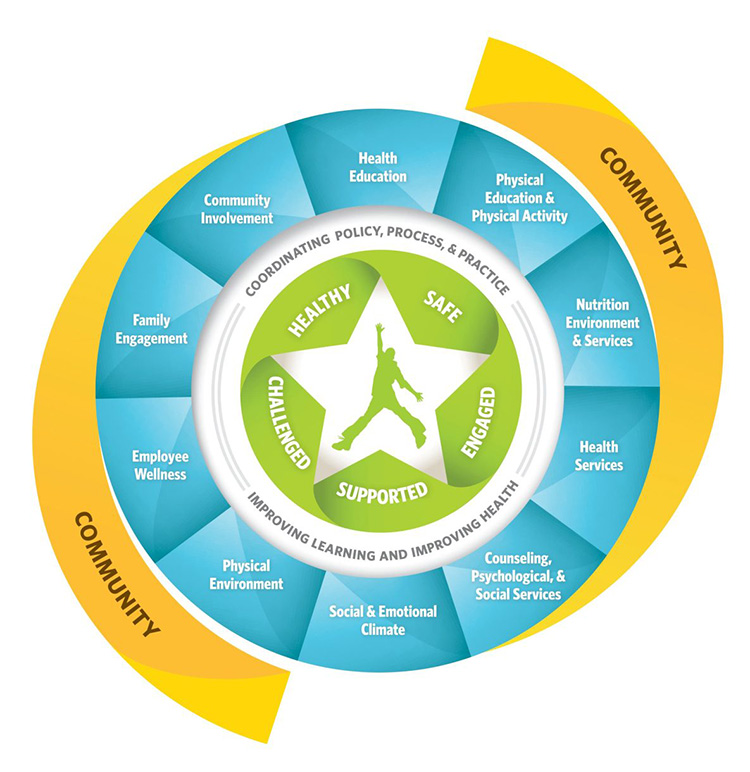At a glance
- Schools have direct contact with more than 95% of U.S. youth, aged 5–17 years, for 6 hours a day.
- Schools influence 13 critical years of students' social, psychological, physical, and intellectual development.
- Schools promote students' health and safety by helping them establish lifelong health patterns.
- Healthy students are better learners, and academic achievement bears a lifetime of benefits for health.

Why it's important
Schools are an ideal setting to teach and provide students with opportunities to:
- Improve their dietary and physical activity behaviors.
- Manage their chronic health conditions—such as asthma, diabetes, epilepsy, food allergies, and poor oral health.
When schools enact health policies and practices, healthy students can grow to be healthy and successful adults.
CDC is committed to creating healthier schools where students are safe, engaged, supported, and challenged.

How it works
CDC works with states, school systems, communities, and national partners to prevent students' chronic disease and promote their health and well-being. The Whole School, Whole Community, Whole Child (WSCC) framework is our framework for addressing health in schools. The student-centered WSCC framework emphasizes:
- The community's role in supporting the school.
- The importance of evidence-based policies and practices.

What we do
CDC partnerships
By partnering with key leaders from the health and education fields, CDC promotes:
- Healthier nutrition options and education.
- Comprehensive physical activity programs and physical education.
- Improved processes and better training to help students manage chronic conditions.
- Health education that instills lifelong healthy habits and health literacy.
- Practices that improve school health services and links to clinical and community resources.
We do this by:
- Funding state education and health agencies, universities, and a tribal nation. We also offer them technical assistance, specialized tools, recommendations, and resources to support their work for school health.
- Working with nongovernmental organizations to strengthen the work of the state grantees in our school health priority areas.
- Providing training and professional development for school administrators and staff to help ensure students are healthy and ready to learn.
- Offering information and resources to help parents get involved in their child’s school. The resources also enable parents to: advocate for their child, and help shape a healthy school environment.
- Collecting data in our surveillance systems to aid decision-making and evidence-based strategies.
